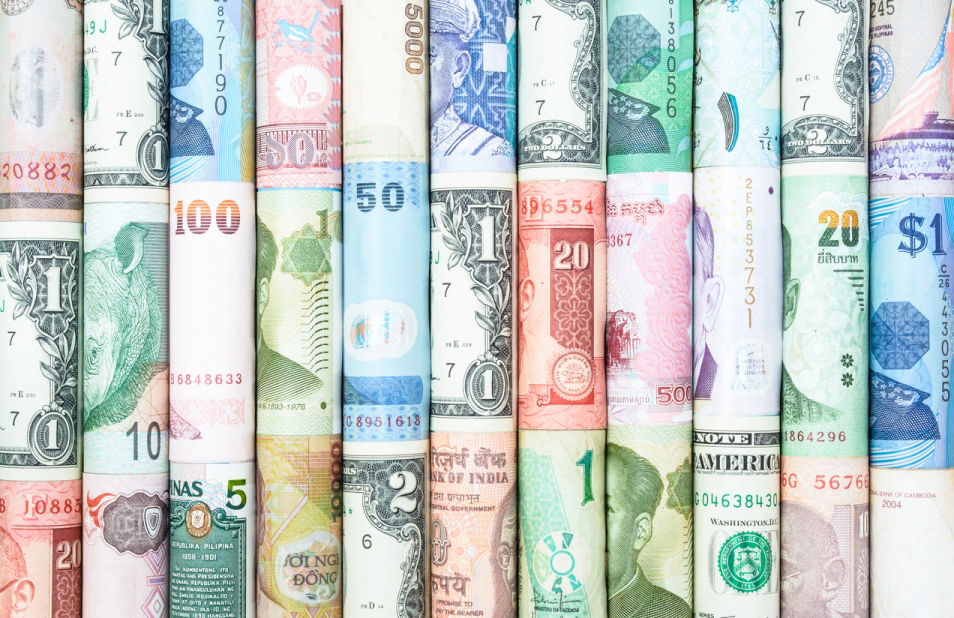Exchanging money before or during your trip can make a big difference in how much you actually get to spend. The wrong choice—like airport kiosks or hotel exchanges—could cost you way more than you think. But with the right approach, you can maximize your travel budget and avoid hidden fees.

Some travelers wait until they arrive at their destination to exchange money, only to realize they’re paying high fees at the airport or getting a poor exchange rate at their hotel. Others rely on their credit or debit cards, not knowing that foreign transaction fees can add up quickly.
The good news? There are better ways to get local currency without losing money to unnecessary fees. Whether you’re exchanging cash before you leave, withdrawing money from an ATM abroad, or using a travel-friendly credit card, planning ahead can help you get the best deal. Here’s how to exchange currency the smart way.
Where to Exchange Currency Without Paying High Fees
Choosing the right place to exchange your money can help you save on unnecessary fees and get the most out of your foreign currency exchange. Here are some tips to find the best options.
Best Ways to Exchange Currency Before Your Trip
To get the best exchange rates and avoid high fees, consider exchanging money before you leave. Here are the most convenient places to exchange currency.
1. Visit Your Local Bank or Credit Union
Most major banks and credit unions offer currency exchange services to account holders, either in-person or through online banking. Some even allow you to order foreign currency and pick it up at a branch.
If your bank has partnerships with international financial institutions, you may also be able to withdraw cash at certain ATMs overseas without incurring extra fees. Check with your bank before traveling to see if this option is available.
Here’s a breakdown of foreign currency services from some of the largest banks and credit unions:
| Bank/Credit Union | Exchange Limit | Fees | Processing Time |
|---|---|---|---|
| America First Credit Union | Up to $5,000 | $10 fee for over $300, $20 fee for under $300 | Varies by branch |
| Bank of America | Up to $10,000 in 30 days | Discounts for Preferred Rewards clients | Same-day shipping for online orders placed by 2 PM |
| Citibank | Over 50 currencies | Free for Citigold/Citi Priority; $5 fee under $1,000 for other accounts | Home delivery available ($10-$20 fee) |
| Chase | Up to $5,000 | Varies by branch | Contact branch for details |
| Huntington Bank | Up to $20,000 in 75 currencies | $8 fee | In-branch service |
| PNC Bank | No set limit | No transaction fees | Available in 24-48 hours |
| State Employees’ Credit Union | Varies by location | No stated fees | Contact branch to check availability |
| Truist | No stated limit | $10 fee; $200 minimum per order | 2-3 business days |
| TD Bank | No stated limit | Foreign transaction fee applies | Available within two business days |
| U.S. Bank | No stated limit | $10 fee for orders under $250, free for orders over $250 | In-branch service |
| Wells Fargo | No stated limit | Free shipping for orders over $1,000 | Online, phone, or in-branch service |
If your primary bank or credit union doesn’t offer currency exchange, check with other institutions in your area.
2. Convert Currency Online
Online currency exchange services like Xchange of America allow you to order foreign currency online and have it delivered to your home. While this is convenient, it typically comes with service fees and shipping charges. Additionally, the exchange rate may not be as favorable as what you’d get through a bank.
3. Foreign Exchange Stores
Currency exchange stores, often found in malls and tourist areas, are another option. However, they usually have higher fees and less competitive exchange rates. These should be a last resort if no better options are available.
Where to Exchange Currency While Traveling
If you weren’t able to get foreign currency before your trip, don’t worry. You still have options, but be mindful of higher fees and unfavorable exchange rates in some locations.
1. ATMs
Using an ATM is often one of the cheapest ways to get local currency—especially if your bank reimburses foreign ATM fees. Look for major bank ATMs instead of standalone ones, which typically charge higher fees.
Also, always choose to be charged in the local currency instead of USD to avoid hidden conversion fees. Some banks, like Charles Schwab and Fidelity, offer debit cards with no foreign transaction fees and reimburse ATM charges, making them great choices for frequent travelers.
Check with your bank before your trip to see if they have partnerships with international banks, as this may allow you to withdraw cash without extra fees. You can also use your bank’s mobile app to locate affiliated ATMs while abroad.
See also: Best Banks for International Travel of 2025
2. Hotels
Exchanging money at your hotel might seem convenient, but it often comes with high fees and poor currency exchange rates. While it can be a backup option in an emergency, it’s usually better to find a bank or use an ATM instead.
3. Airport Kiosks
Airport currency exchange kiosks are almost always one of the worst options. They charge high fees and offer poor exchange rates compared to banks and ATMs. If you need local cash upon arrival, exchange only a small amount and wait to do a larger transaction at a bank or ATM with lower fees.
What to Do With Leftover Foreign Currency
Upon returning from your trip, you might find yourself with some leftover foreign currency. Unless you wish to keep it as a memento, here are a couple of options:
1. Exchange Foreign Currency at Your Bank
Most banks will buy back foreign currency from consumers. This service is a straightforward way to exchange that unwanted cash back into your local currency. However, remember to check with your bank about any fees or restrictions that may apply to such transactions.
2. Swap Currency at the Airport
If you’re pressed for time and need to exchange your leftover foreign currency, consider visiting a kiosk at your local airport. While not the most cost-effective solution, this option can help you quickly convert your excess foreign cash before you pass through security.
Best Banking Apps for Currency Exchange
If you prefer a digital-first approach, international banking apps can be a great alternative to traditional currency exchanges. These apps let you hold multiple currencies, transfer money globally, and even withdraw cash abroad with minimal fees. Here are some of the best options:
1. Wise
Wise allows you to hold and exchange multiple currencies at the mid-market rate, which is often better than what banks or exchange kiosks offer. You can send money internationally with low, transparent fees and spend in different currencies using the Wise debit card.
- Best for: Frequent travelers who need to send or spend money across different countries.
- Key benefit: No hidden fees; uses real exchange rates.
2. Revolut
Revolut provides fee-free currency exchanges within certain limits and offers a debit card that supports multiple currencies. Higher-tier plans include benefits like free international ATM withdrawals and travel insurance.
- Best for: Travelers who want an all-in-one financial app for spending, saving, and investing abroad.
- Key benefit: Converts money at interbank rates with no markup.
3. Charles Schwab Bank
Charles Schwab’s High Yield Investor Checking account refunds all ATM fees worldwide, making it one of the best options for withdrawing cash while traveling. It also has no foreign transaction fees, making it ideal for international spending.
- Best for: Travelers who frequently withdraw cash abroad.
- Key benefit: Unlimited ATM fee reimbursements worldwide.
4. Fidelity Cash Management Account
Fidelity’s Cash Management Account offers a fee-free ATM experience worldwide by reimbursing all ATM fees and has no foreign transaction fees. While it’s technically a brokerage account, it functions like a checking account with the added benefit of FDIC insurance for up to $1.25 million through partner banks.
- Best for: Travelers looking for a reliable, fee-free account for ATM withdrawals abroad.
- Key benefit: Unlimited ATM fee reimbursements and no foreign transaction fees.
Final Thoughts
The best way to exchange currency depends on how you travel, but making smart choices can help you keep more money in your pocket. A combination of banking apps, ATM withdrawals, and limited cash exchanges will usually get you the best rates with the lowest fees.
Before your trip, check with your bank about foreign transaction fees and ATM partnerships. If you’re a frequent traveler, consider opening an account with a bank that reimburses ATM fees or using an international banking app that offers mid-market exchange rates.
Once abroad, always withdraw money in the local currency to avoid extra conversion fees. If you must exchange cash, do so at a bank rather than an airport or hotel to get better rates.
With a little preparation, you can avoid unnecessary fees and make the most of your travel budget—so you can focus on enjoying the trip, not worrying about exchange rates.




